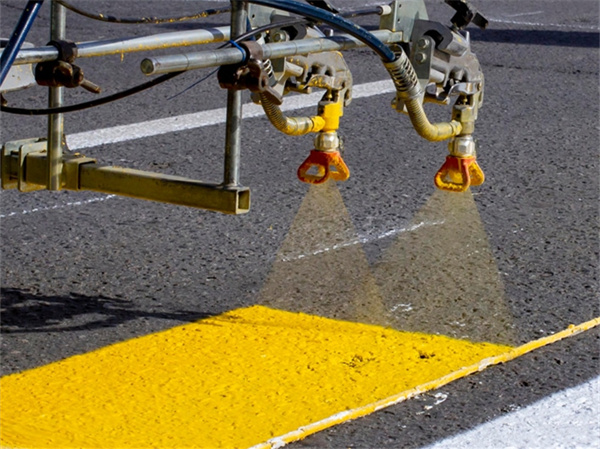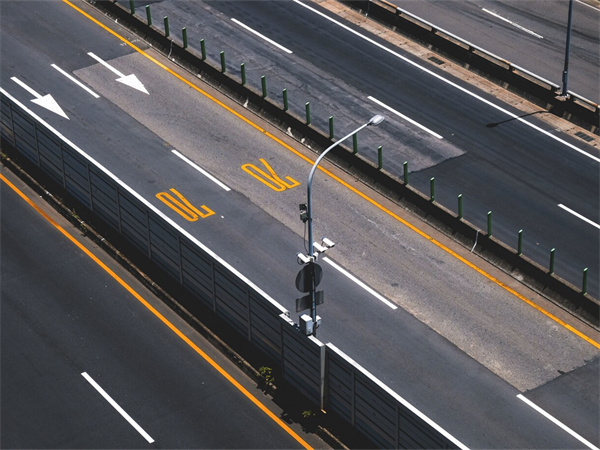
Overview:
Have you ever wondered what makes those highway lines glow so brightly at night? The unsung heroes behind this life-saving illumination are high visibility road marking glass beads. These tiny spheres of glass are revolutionizing highway safety, turning ordinary road markings into beacons of light that guide drivers safely through even the darkest nights. In this comprehensive guide, we’ll dive deep into the world of these microscopic marvels, exploring their composition, applications, and the incredible impact they’re having on road safety worldwide. Whether you’re a road safety enthusiast, a civil engineer, or just a curious driver, buckle up and get ready to see the road in a whole new light!
What Are High Visibility High Visibility Road Marking Glass Beads?
High visibility road marking glass beads are small, spherical particles of glass that are mixed with or dropped onto road marking paint to create reflective lines and symbols on roads. But don’t let their size fool you – these tiny beads pack a powerful punch when it comes to road safety.
Imagine thousands of miniature disco balls embedded in the road paint, each one perfectly positioned to catch and reflect your car’s headlights back to you. That’s essentially how these glass beads work. Their spherical shape allows them to capture light from various angles and redirect it back to its source, a phenomenon known as retroreflection.
But how do these beads end up on the road? There are two main methods: premix and drop-on. In the premix method, the beads are mixed directly into the paint before application. The drop-on method involves sprinkling the beads onto the wet paint immediately after it’s applied. Often, a combination of both methods is used to ensure maximum reflectivity and durability.
The size of these beads is crucial to their effectiveness. Too small, and they won’t protrude enough from the paint to catch the light. Too large, and they’ll stick out too far, making them vulnerable to traffic wear and tear. Most high visibility road marking glass beads range from 100 to 850 micrometers in diameter – that’s about the width of a human hair to the size of a grain of salt.
Specifications and Standards: The Building Blocks of Safety
When it comes to road safety, every detail matters. That’s why high visibility road marking glass beads are subject to rigorous standards and specifications. Let’s break down these tiny safety champions:
Description:
| Specification | Details |
|---|---|
| Type | Soda-lime glass spheres |
| Composition | Typically 70-74% SiO2, 12-16% Na2O, 7-12% CaO, and small amounts of other oxides |
| Attributes | Spherical shape, transparent, colorless |
| Characteristics | High refractive index (1.5-1.6), retroreflective properties |
| Specifications | Size range: 100-850 micrometers; Roundness: >80%; Clarity: >90% |
| Dimensions | Varies by grade, typically 100-850 micrometers in diameter |
| Grades | Type I (standard), Type II (high-index), Type III (wet-reflective) |
| Standards | Meets AASHTO M247, EN 1423, BS 6088, and other international standards |
The roundness and clarity specifications are crucial. A bead that isn’t round won’t reflect light properly, and a bead that isn’t clear will absorb light rather than reflect it. Think of it like a tiny disco ball – it needs to be perfectly round and shiny to do its job properly.As for grades, Type I beads are your standard workhorse beads. Type II beads have a higher refractive index, making them even more reflective. Type III beads are the superstars of the bead world, designed to maintain their reflectivity even in wet conditions. It’s like having different types of tires for different driving conditions, but for road markings!
Applications: Where the Rubber Meets the Road
Now that we know what these beads are and what makes them tick, let’s explore where they strut their stuff. These tiny spheres of safety have a surprisingly wide range of applications:
Application:
- Highways: Lane markings, edge lines, center lines
- Urban Roads: Crosswalks, stop lines, directional arrows
- Airports: Runway markings, taxiway lines
- Parking Lots: Parking space lines, directional arrows
- Construction Zones: Temporary lane markings, detour signs
- Bike Lanes: Bike lane markings, shared lane symbols
- Industrial Facilities: Safety lines, traffic flow indicators
- Sports Facilities: Field markings, track lines
On highways, these beads are the unsung heroes of night driving. They make lane markings, edge lines, and center lines pop, helping drivers stay in their lanes and navigate curves safely. In urban areas, they enhance the visibility of crosswalks and stop lines, protecting pedestrians and cyclists.But their usefulness doesn’t stop at roads. Airports rely on these beads to keep runways and taxiways clearly marked, even in low visibility conditions. Parking lots use them to delineate spaces and guide traffic flow. Even sports facilities benefit from their reflective properties for field and track markings.
Weighing the Pros and Cons
Like any product, high visibility road marking glass beads have their strengths and limitations. Let’s break them down:
| Pros | Cons |
|---|---|
| Highly reflective, improving road safety | Can be dislodged by heavy traffic or snowplows |
| Durable and long-lasting | Less effective in wet conditions (except Type III) |
| Cost-effective road safety solution | Require periodic reapplication |
| Versatile applications across various settings | Environmental concerns about microplastic pollution |
While the pros clearly outweigh the cons, it’s important to consider these factors when choosing and applying road marking glass beads.
Why Choose LANXING ?
When it comes to sourcing high-quality road marking glass beads, LangFang Lanxing Impex Co., Ltd stands out from the crowd. But why should you choose them? Let’s dive into what makes this company a shining star in the world of road safety materials.
First and foremost, LangFang Lanxing Impex Co., Ltd is not just another supplier – they’re a premier provider of high-quality raw materials for the road marking industry. Imagine having a trusted partner who’s been in the game long enough to know all the ins and outs, yet innovative enough to stay ahead of the curve. That’s exactly what you get with LangFang Lanxing.
Their extensive experience in the field is like having a seasoned navigator on your road safety journey. They’ve seen the industry evolve, understood the challenges, and developed solutions that stand the test of time. This wealth of knowledge translates into products that aren’t just good – they’re exceptional.
But experience alone isn’t enough in today’s fast-paced world. That’s why LangFang Lanxing Impex Co., Ltd has a steadfast commitment to innovation and excellence. They’re not content with the status quo; they’re constantly pushing the boundaries of what’s possible in road marking materials. It’s like having a team of scientists working tirelessly to make your roads safer and more visible.
The result? Superior materials that ensure road markings are durable, visible, and safe worldwide. Whether you’re marking a busy highway in New York or a remote road in New Zealand, LangFang Lanxing’s products deliver consistent, high-quality performance.And that’s not all – they offer a variety of other essential raw materials for road safety. It’s like having a Swiss Army knife of road marking materials at your disposal.
Choosing LangFang Lanxing Impex Co., Ltd isn’t just about buying products – it’s about partnering with a company that’s as committed to road safety as you are. It’s about having confidence that the materials you’re using are the best in the business. And ultimately, it’s about knowing that you’re playing a crucial role in making roads safer for everyone.
FAQs: Shedding Light on Common Questions
Q1: How long do road marking glass beads typically last?
A: The lifespan of road marking glass beads can vary depending on traffic volume, weather conditions, and the quality of the beads. On average, they can last anywhere from 2 to 4 years. However, in high-traffic areas or harsh climates, they may need to be reapplied more frequently. Think of it like the tread on your tires – the more you use them and the tougher the conditions, the faster they wear out.
Q2: Are road marking glass beads environmentally friendly?
A: This is a complex question. Glass beads are inert and non-toxic, which is a plus. However, there are concerns about microplastic pollution as these beads can be washed off roads into waterways. Many manufacturers, including LangFang Lanxing Impex Co., Ltd, are working on more environmentally friendly alternatives and improved application methods to minimize environmental impact. It’s a balancing act between road safety and environmental protection.
Q3: Can road marking glass beads improve visibility in rainy conditions?
A: Standard glass beads (Type I and II) are less effective in wet conditions because water can form a film over them, reducing their reflective properties. However, Type III beads are specifically designed to maintain reflectivity in wet conditions. They’re like the all-weather tires of the glass bead world!
Q4: How are road marking glass beads applied?
A: There are two main methods: premix and drop-on. In the premix method, beads are mixed into the paint before application. In the drop-on method, beads are sprinkled onto wet paint immediately after it’s applied. Often, a combination of both methods is used for maximum effectiveness. It’s like making a layered cake – each layer serves a purpose in creating the final product.
Q5: Are all road marking glass beads the same?
A: Not at all! Glass beads can vary in size, refractive index, and other properties. Different types are suited for different applications and conditions. For example, larger beads might be used for highway markings, while smaller ones might be preferred for urban roads. It’s similar to how you’d choose different types of light bulbs for different rooms in your house.







